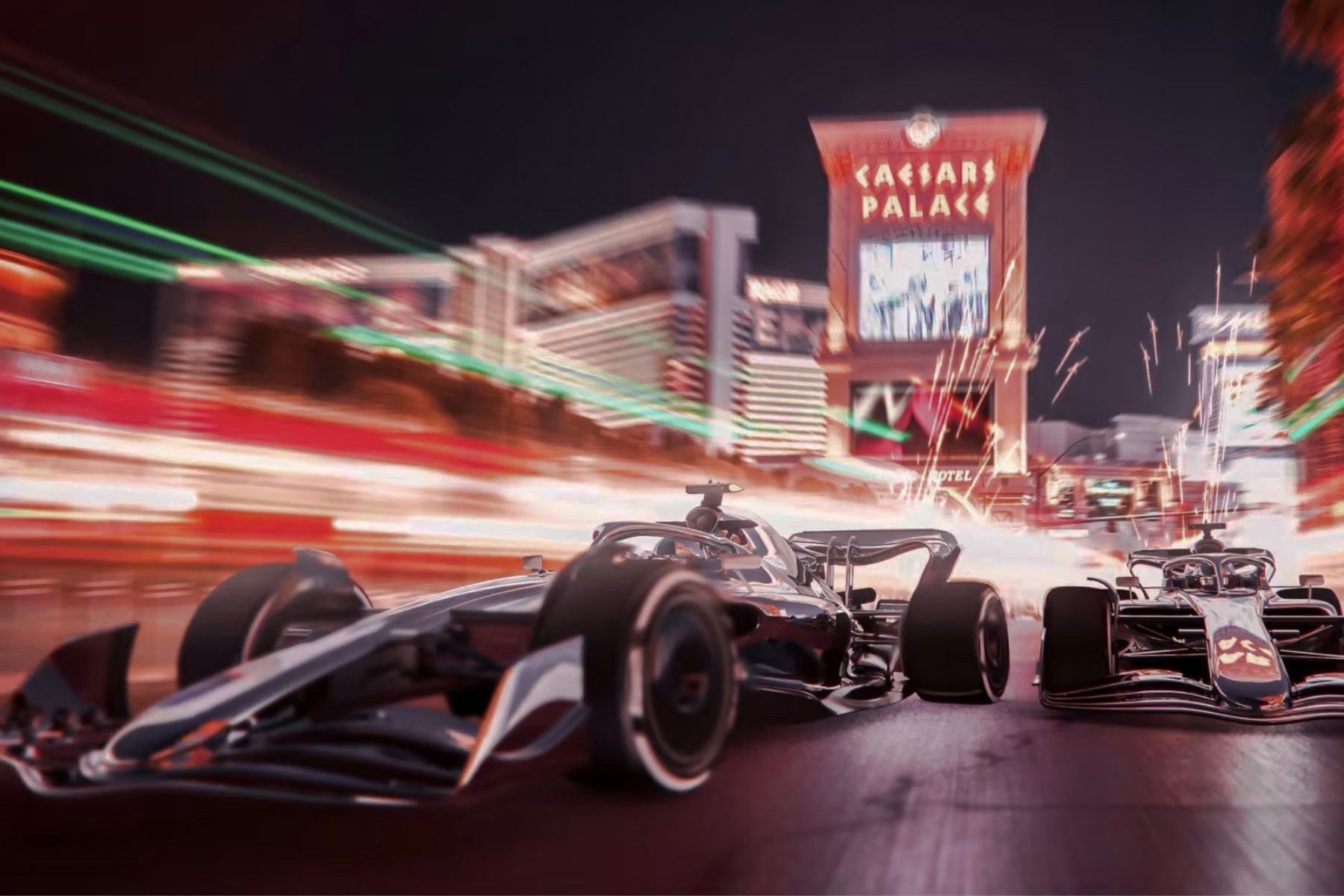The History of Formula One Racing
Formula One is the highest class of international racing for open-wheel single-seater formula racing cars sanctioned by the Fédération Internationale de l'Automobile. It is a sport that has evolved over seven decades to become a global phenomenon. With its high-speed thrills and intense rivalries, it has become synonymous with adrenaline and glamour. F1 has a history steeped in innovation, competition, and drama. The upcoming Las Vegas race is poised to add another chapter to Formula One's storied history. Las Vegas, known for its vibrant atmosphere and iconic landmarks, is set to host a race that promises to be a spectacle both on and off the track. The city's dazzling lights and energetic ambiance will provide a unique backdrop for the intense competition that F1 is renowned for. The Pre-Formula One Era In the early 20th century, motorsports were still in their infancy. Automobile pioneers pushed the boundaries of speed, competing in races across the globe. These races were a test of skill and endurance, with drivers navigating treacherous roads and confronting various obstacles. One of the most famous races of this era was the Targa Florio in 1906, held in Sicily, Italy. This grueling endurance race challenged drivers to navigate a 92-mile circuit through the rugged terrain of the Madonie Mountains. With hairpin turns, steep inclines, and unpredictable weather conditions, the Targa Florio demanded not only speed but also exceptional driving skills and mechanical reliability. Another iconic event of the pre-Formula One era was the Indianapolis 500, first held in 1911. This legendary oval race in the United States attracted the best drivers from around the world, all vying for the prestigious Borg-Warner Trophy. The Inception of an Official Championship Formula One traces its roots to the mid-20th century. In the aftermath of World War II, Europe's passion for motor racing was rekindled, and various forms of racing began to take shape. However, it was the Fédération Internationale de l'Automobile (FIA) that officially laid the foundation for the sport with the inception of the Formula One World Championship in 1950. The inaugural season saw a mere seven races held in Europe, with Italy's Giuseppe Farina clinching the championship for Alfa Romeo. The cars were rudimentary, and safety concerns were far from the forefront. Nevertheless, the sport was born, and a passion was ignited. As the years went by, F1 evolved and grew in popularity. Legendary drivers like Juan Manuel Fangio, Ayrton Senna, and Michael Schumacher became household names, captivating audiences with their skill, bravery, and determination. The sport became a global phenomenon, with races held on iconic circuits such as Monza, Monaco, and Suzuka. The Early Days of F1 The 1950s and 1960s marked a period of rapid evolution in Formula One. The sport's early heroes, including Alberto Ascari, Juan Manuel Fangio, and Stirling Moss, showcased their skill behind the wheel of sleek, cigar-shaped machines. Teams like Ferrari, Mercedes, and Lotus pushed the boundaries of engineering, introducing innovations like disc brakes and monocoque chassis. Racing legends like Jim Clark and Graham Hill emerged as the sport expanded beyond its European heartland. One of the defining moments of this era was the rivalry between Ferrari and Ford, immortalized in the film ‘Ford v Ferrari.’ This battle for supremacy at the 24 Hours of Le Mans showcased the sheer determination of teams and drivers, pushing them to the limits of endurance. A Turbocharged Revolution The 1970s saw the advent of turbocharged engines, bringing more power and speed to the sport. Drivers like Niki Lauda and James Hunt captured the world's imagination with their fierce rivalry, culminating in the dramatic 1976 season. This era also saw the rise of charismatic personalities, such as James Hunt and the enigmatic Gilles Villeneuve, who captured the hearts of fans worldwide. The 1980s brought the era of the 'Turbo Titans,' with teams like McLaren and Williams dominating the scene. The unforgettable battles between Alain Prost and Ayrton Senna, often overshadowed by their intense rivalry, showcased the sport's ever-increasing technical complexity and growing global reach. The 1990s were marked by triumph and tragedy. The sport mourned the loss of its brightest star, Ayrton Senna, in a tragic accident at Imola in 1994, reminding the world of the inherent dangers in the pursuit of speed. However, it also witnessed the emergence of new talents like Michael Schumacher and Mika Häkkinen, along with the resurgence of Ferrari as a dominant force. The New Millennium: Technological Marvels As F1 evolved, so did its focus on safety. Tragic accidents in the early years led to significant changes in safety standards. Today, drivers are protected by rigorous safety measures such as reinforced cockpits, fire-resistant materials, and advanced restraint systems. One of the most significant safety

Formula One is the highest class of international racing for open-wheel single-seater formula racing cars sanctioned by the Fédération Internationale de l'Automobile. It is a sport that has evolved over seven decades to become a global phenomenon. With its high-speed thrills and intense rivalries, it has become synonymous with adrenaline and glamour. F1 has a history steeped in innovation, competition, and drama. The upcoming Las Vegas race is poised to add another chapter to Formula One's storied history. Las Vegas, known for its vibrant atmosphere and iconic landmarks, is set to host a race that promises to be a spectacle both on and off the track. The city's dazzling lights and energetic ambiance will provide a unique backdrop for the intense competition that F1 is renowned for.
The Pre-Formula One Era

In the early 20th century, motorsports were still in their infancy. Automobile pioneers pushed the boundaries of speed, competing in races across the globe. These races were a test of skill and endurance, with drivers navigating treacherous roads and confronting various obstacles. One of the most famous races of this era was the Targa Florio in 1906, held in Sicily, Italy. This grueling endurance race challenged drivers to navigate a 92-mile circuit through the rugged terrain of the Madonie Mountains. With hairpin turns, steep inclines, and unpredictable weather conditions, the Targa Florio demanded not only speed but also exceptional driving skills and mechanical reliability. Another iconic event of the pre-Formula One era was the Indianapolis 500, first held in 1911. This legendary oval race in the United States attracted the best drivers from around the world, all vying for the prestigious Borg-Warner Trophy.
The Inception of an Official Championship
Formula One traces its roots to the mid-20th century. In the aftermath of World War II, Europe's passion for motor racing was rekindled, and various forms of racing began to take shape. However, it was the Fédération Internationale de l'Automobile (FIA) that officially laid the foundation for the sport with the inception of the Formula One World Championship in 1950. The inaugural season saw a mere seven races held in Europe, with Italy's Giuseppe Farina clinching the championship for Alfa Romeo. The cars were rudimentary, and safety concerns were far from the forefront. Nevertheless, the sport was born, and a passion was ignited. As the years went by, F1 evolved and grew in popularity. Legendary drivers like Juan Manuel Fangio, Ayrton Senna, and Michael Schumacher became household names, captivating audiences with their skill, bravery, and determination. The sport became a global phenomenon, with races held on iconic circuits such as Monza, Monaco, and Suzuka.
The Early Days of F1
The 1950s and 1960s marked a period of rapid evolution in Formula One. The sport's early heroes, including Alberto Ascari, Juan Manuel Fangio, and Stirling Moss, showcased their skill behind the wheel of sleek, cigar-shaped machines. Teams like Ferrari, Mercedes, and Lotus pushed the boundaries of engineering, introducing innovations like disc brakes and monocoque chassis. Racing legends like Jim Clark and Graham Hill emerged as the sport expanded beyond its European heartland. One of the defining moments of this era was the rivalry between Ferrari and Ford, immortalized in the film ‘Ford v Ferrari.’ This battle for supremacy at the 24 Hours of Le Mans showcased the sheer determination of teams and drivers, pushing them to the limits of endurance.

A Turbocharged Revolution
The 1970s saw the advent of turbocharged engines, bringing more power and speed to the sport. Drivers like Niki Lauda and James Hunt captured the world's imagination with their fierce rivalry, culminating in the dramatic 1976 season. This era also saw the rise of charismatic personalities, such as James Hunt and the enigmatic Gilles Villeneuve, who captured the hearts of fans worldwide. The 1980s brought the era of the 'Turbo Titans,' with teams like McLaren and Williams dominating the scene. The unforgettable battles between Alain Prost and Ayrton Senna, often overshadowed by their intense rivalry, showcased the sport's ever-increasing technical complexity and growing global reach. The 1990s were marked by triumph and tragedy. The sport mourned the loss of its brightest star, Ayrton Senna, in a tragic accident at Imola in 1994, reminding the world of the inherent dangers in the pursuit of speed. However, it also witnessed the emergence of new talents like Michael Schumacher and Mika Häkkinen, along with the resurgence of Ferrari as a dominant force.
The New Millennium: Technological Marvels
As F1 evolved, so did its focus on safety. Tragic accidents in the early years led to significant changes in safety standards. Today, drivers are protected by rigorous safety measures such as reinforced cockpits, fire-resistant materials, and advanced restraint systems. One of the most significant safety improvements in recent years is the introduction of the Halo device. This cockpit protection system consists of a curved bar that surrounds the driver's head, providing additional protection in the event of a crash. The Halo has been credited with saving lives and preventing serious injuries in several high-profile incidents.

Furthermore, the construction of the cars themselves has undergone significant advancements in terms of safety. The chassis is made from carbon fiber, a material known for its strength and ability to absorb energy upon impact. This ensures that the driver is protected in the event of a collision. Additionally, fire-resistant materials are used throughout the car to minimize the risk of fire-related injuries. The fuel tanks are designed to withstand impacts and prevent leakage, reducing the chances of a fire breaking out. Advanced restraint systems, such as six-point harnesses, keep the driver securely in place during high-speed maneuvers, minimizing the risk of injury. These advancements in safety have dramatically reduced the risk of fatal accidents and made the sport safer for everyone involved. Formula One continues to prioritize safety and invest in research and development to further enhance the protection provided to drivers.
The turn of the millennium brought F1 into the digital age. Technological advancements in aerodynamics, telemetry, and hybrid power units transformed the sport into a high-tech marvel. Drivers like Michael Schumacher, Fernando Alonso, and Lewis Hamilton became household names, rewriting record books and pushing the boundaries of what was possible. The 'Silver Arrows' of Mercedes-Benz established an era of dominance, with Lewis Hamilton amassing multiple championships, solidifying his legacy as one of the greatest drivers in the sport's history.
The Importance of Teamwork
F1 teams are the heart and soul of the sport, responsible for designing, building, and racing high-performance cars that compete in the FIA Formula One World Championship. These teams play a crucial role in the development and success of Formula One. There are 10 teams participating in the 2023 season: Scuderia Ferrari, Red Bull Racing, Mercedes, MacLaren, Aston Martin, Alpine, Williams Racing, AlphaTauri, Alfa Romeo, and Haas. Formula One teams must adhere to strict technical and financial regulations, including budget caps introduced in recent years to ensure a level playing field and the long-term sustainability of the sport. Formula One teams are the lifeblood of the sport, shaping its future through innovation, competition, and a unique blend of engineering expertise and driver talent. The teams' distinctive identities and their pursuit of excellence make them an integral part of Formula One’s enduring appeal.

Challenges and Controversies
Formula One has not been without its share of challenges and controversies. High costs, disputes over revenue distribution, and debates about safety have been persistent issues. The sport continually grapples with the need to strike a balance between tradition and innovation. 2020 brought a unique challenge in the form of the COVID-19 pandemic, which disrupted the F1 calendar and highlighted the sport's adaptability and resilience. The introduction of the cost cap in 2021 aimed to address financial disparities and make the competition more equitable.

The Future of F1
As we look ahead, Formula One continues to evolve. New regulations, sustainable technologies, and the goal of carbon neutrality are at the forefront of the sport's agenda. One of the notable aspects of this evolution is Formula One’s expansion into emerging markets. This strategy is not merely about introducing new races; it's a broader move to tap into new fan bases and regions where motorsport was previously less prominent. This global growth strategy not only broadens Formula One’s fan base but also showcases the sport's commitment to inclusivity, ensuring that it remains relevant and appealing to a diverse audience worldwide. The history of Formula One is a thrilling narrative that unfolds through seven decades of innovation, competition, and drama. Formula One has pushed the limits of what is possible in motorsport.
As the countdown to the Las Vegas race begins, fans around the world eagerly await the excitement and spectacle that only Formula One can deliver. As Formula One races toward an exciting and sustainable future, the sport's rich past remains a source of inspiration. The enduring passion of the drivers, engineers, and fans who have contributed to its history ensures that the thundering symphony of speed will continue to enthrall generations to come. Today, Formula One continues to captivate millions of fans around the world. The sport has become a showcase of cutting-edge technology, precision engineering, and extraordinary talent. Each race is a battle of strategy, skill, and determination as drivers push themselves and their machines to the limit in pursuit of victory.






















